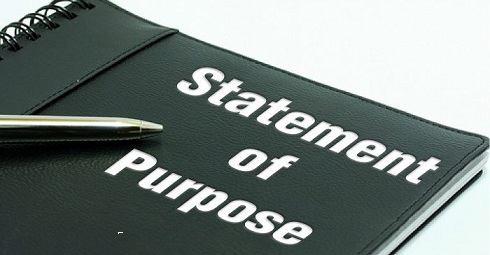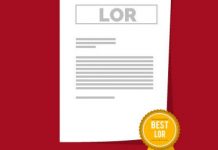CDS 2 Exam Pattern, UPSC CDS Exam Syllabus, CDS 2 Exam Schedule 2016, Model Question Paper, Study Material, cut off marks and Question Paper is now available to download at www.upsc.gov.in.
The UPSC conducts Combined Defence Services Exam twice in a year for admissions to various defence academies like Indian Military Academy (IMA), Indian Naval Academy (INA), Air Force Academy (AFA) and Officers Training Academy (OTA). UPSC CDS 2 will be conducted in the month of October. After the candidates qualify the written exam, they will be called for an interview by the Service Selection Board and then after selection they will be sent to the above-mentioned academies as per their choice and merit rank.
Also Check:
Important Dates for CDS II 2016
- Notification Date: 16 July, 2016
- Last Date to Apply: 12 August, 2016
- CDS Exam Date: 23 October, 2016
UPSC CDS 2 Exam Pattern 2016
As per the latest CDS 2 Pattern 2016, the written test will cover 3 subjects i.e. English, General Knowledge and mathematics but for the candidates who opt for officers training academy have to give written test of only 2 subjects are General Knowledge and English. There will be Objective Multiple Choice Questions with one correct answer. There will be negative marking of one-third for each wrong answer.
For Admission to Indian Military Academy (IMA), Indian Naval Academy (INA), Air Force Academy (AFA), the CDS 2 Exam Pattern is given below:
| Papers | Subject | Time | Marks |
| Paper I | General Knowledge | 120 Minutes | 100 |
| Paper II | English | 120 Minutes | 100 |
| Paper III | Elementary Mathematics | 120 Minutes | 100 |
Total =300 Marks
For Admission in Officers Training Academy, the CDS 2 Exam Pattern is given below:-
| Papers | Subject | Time | Marks |
| Paper I | General Knowledge | 120 Minutes | 100 |
| Paper II | English | 120 Minutes | 100 |
Total =200 Marks
UPSC CDS Exam Syllabus
The CDS 2 Syllabus 2016 for all the three subjects is given below. The candidates can also download pdf from the official website link.
English Language:
The English question paper is designed to test your skills of English Language, so you should have the knowledge to understand different words of English and how to use them in different contexts.
Synonyms, Antonyms, Reading Comprehension, Para Jumbles, Error Spotting, Jumbled Sentences, Sentence Correction and Fill in the Blanks
General Knowledge:
The General knowledge section will consist of questions from current events and of such matters of every day. So the candidates need to be aware what is happing in our day to day life, observation, and experience in scientific aspects as may be expected of an educated person who has not made a special study of any scientific subject. Knowledge of science is also important. The Question paper also includes questions from History of India and Geography of nature.
Elementary Mathematics:-
It is divided into six sections:-
- Arithmetic:- It contains three parts which are as follows :-
- Number System– Natural numbers, Integers, Rational and Real numbers. Fundamental operations addition, subtraction, multiplication, division, Square roots, Decimal fractions.
- Unitary method– time and distance, time and work, percentages, applications to simple and compound interest, profit and loss, ratio and proportion, variation.
- Elementary Number Theory– Division algorithm. Prime and composite numbers. Tests of divisibility by 2, 3, 4, 5, 9 and 11. Multiples and factors. Factorisation Theorem. H.C.F. and L.C.M. Euclidean algorithm, Logarithms to base 10, laws of logarithms, use of logarithmic tables.
- Algebra: This section includes the following:-
Basic Operations, simple factors, Remainder Theorem, H.C.F., L.C.M. Theory of polynomials, solutions of quadratic equations, the relation between its roots and coefficients (Only real roots to be considered), Simultaneous linear equations in two unknowns-analytical and graphical solutions, Simultaneous linear equations in two variables and their solutions. Practical problems leading to two simultaneous linear equations or inequations in two variables or quadratic equations in one variable & their solutions, Set language and set notation, Rational expressions and conditional identities, Laws of indices.
- Trigonometry:- it includes the following things:
Sine x, cosine x, Tangent x when 0 < x < 90 degrees, Values of sin x, cos x and tan x, for x = 0, 30, 45, 60 and 90 degrees, Simple trigonometric identities, Use of trigonometric tables, simple cases of heights and distances.
- Geometry:-This section includes :-
Lines and angles, Plane and plane figures, Theorems on (i) Properties of angles at a point (ii) Parallel lines, (iii) Sides and angles of a triangle, (iv) Congruency of triangles, (v) Similar triangles, (vi) Concurrence of medians and altitudes, (vii) Properties of angles, sides and diagonals of a parallelogram, rectangle and square (viii) Circles and its properties including tangents and normals, (ix) Loci
- Mensuration:-This section includes the following topics:-
Areas of squares, rectangles, parallelograms, triangle and circle. Areas of figures which can be split up into these figures (Field Book), Surface area and volume of cuboids, lateral surface and volume of right circular cones and cylinders, surface area and volume of spheres.
- Statistics:-This section includes :-
Collection and tabulation of statistical data, Graphical representation frequency polygons, histograms, bar charts, pie charts, etc. Measures of central tendency.















































